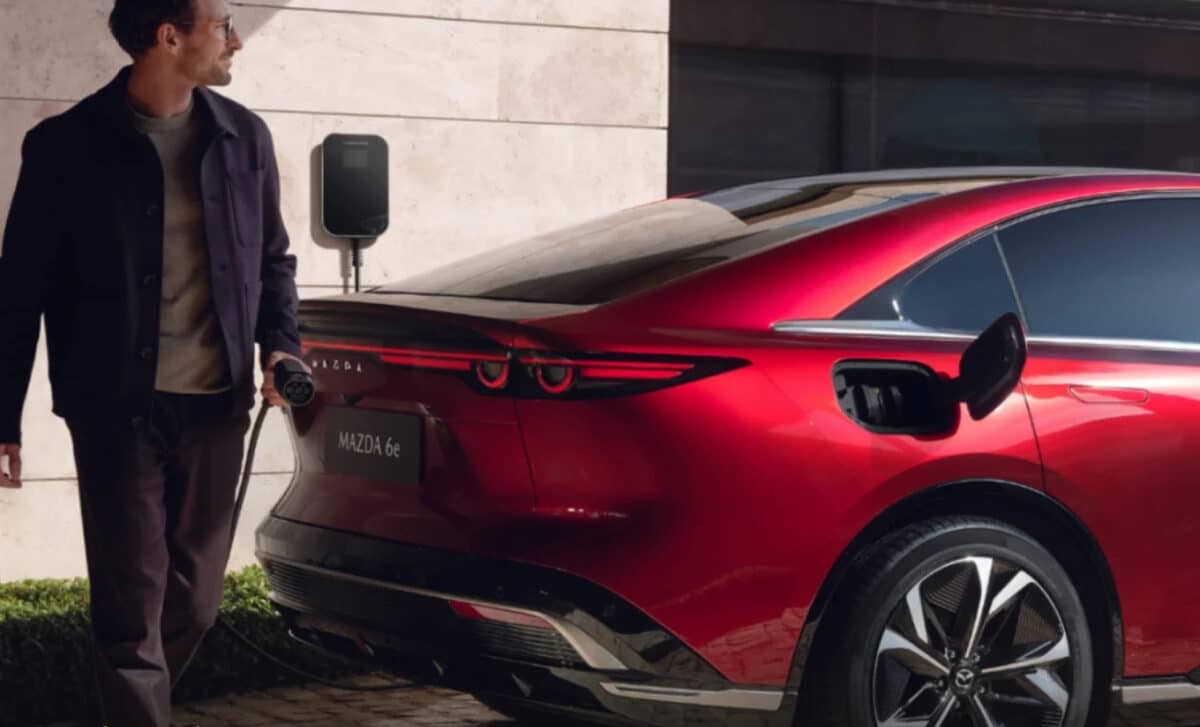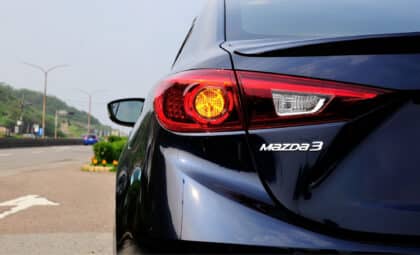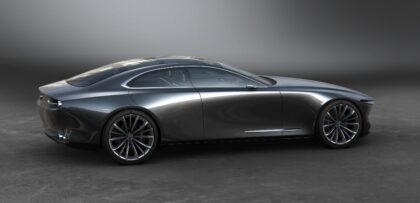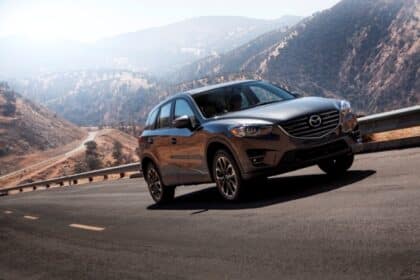With a striking design, up to 500 kilometers of range, and rear-wheel drive dynamics, Mazda’s first fully electric sedan enters direct competition with EV staples like the Tesla Model 3 and BYD Seal.
This move follows years of slow progress from the Japanese automaker on the EV front, culminating in a bold strategic shift: rather than build from scratch, Mazda has adapted a Chinese platform to deliver a product it believes can still carry its driving-focused DNA into the electric future.
The 6e isn’t a rebirth — it’s a workaround. After the MX-30 failed to gain traction, Mazda looked to external solutions. The result is a car designed to capture traditional Mazda fans while also appealing to new EV buyers. It is the first electric model from Mazda in years to carry a full sedan body, and it’s being positioned as a practical, responsive alternative to more software-oriented rivals.
The car’s development was accelerated thanks to its Chinese roots. Built on the bones of the Changan Deepal L07, the 6e is assembled in China and distributed under the Mazda badge with significant styling and tuning modifications. The model is already on sale in markets like Australia and Europe, and feedback from early tests highlights a mix of competent engineering and restrained ambition.
Rear-Wheel Drive Returns with a Focus on Feel
Mazda’s biggest play with the 6e is its dedication to rear-wheel drive — a rarity in the electric sedan segment. Equipped with a single rear-mounted motor, the 6e delivers 190 kW (255 hp) and 236 lb-ft of torque, powered by either a 68.8 kWh LFP or a larger 78 kWh battery pack. Fast charging ranges from 90 kW to 165 kW depending on configuration, with reported times as low as 15 minutes from 30 to 80 percent, reports Supercar Blondie.
In driving tests conducted during the Eurocharge 2025 EV road trip, the 6e stood out for its balanced handling on twisty mountain roads. “As a dynamic package, the 6e felt great,” according to InsideEVs. Reviewers praised the tight steering, minimal understeer, and overall planted feel, especially given the EV’s low center of gravity.
Still, it’s not without drawbacks. The driving position was widely criticized, with the elevated floor — due to battery placement — forcing an unnatural seating posture. Drivers reported feeling “perched,” with limited steering wheel reach adjustment. While not a dealbreaker for all, it undercuts the sporty aspirations Mazda attaches to the model.
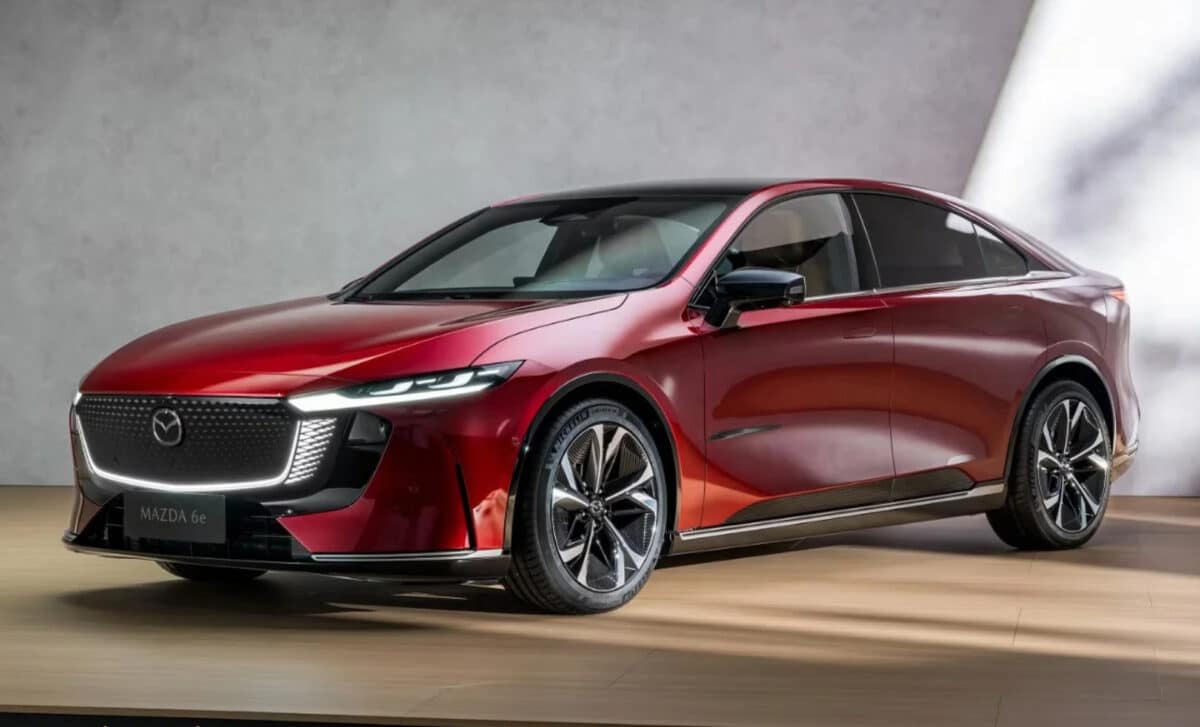
A Recognizable Face on a Borrowed Frame
The 6e might not be Mazda at the core, but it wears the brand’s skin convincingly. The exterior design draws heavily on Mazda’s Kodo styling, wrapping the Chinese-built platform in elegant curves and minimalist surfaces. Despite retaining the proportions of the Changan Deepal L07, the 6e has been tailored to match Mazda’s visual language.
Its rear styling, including a retractable spoiler and high-set taillights, garnered mixed opinions. Some called it a design misstep, while others appreciated its standout look. Mazda’s Soul Red Crystal paint remains a crowd favorite — multiple reviewers noted that it turned heads and sparked conversations on the road.
Inside, the cabin feels more like a tech-focused reinterpretation of Mazda’s usual interiors. A 14.6-inch central screen dominates the dashboard, while physical buttons are nearly absent. The interface is functional but comes with a learning curve, and the layout lacks the ergonomic finesse of competitors like Tesla or Mercedes-Benz.
Materials vary by trim. Top-spec versions include real leather and suede, giving the space a premium touch, but lower variants reportedly feel less convincing. One upside is practicality: the 6e is a liftback, with a spacious 16.5 cu-ft trunk that expands to over 38 cu-ft when the rear seats are folded.
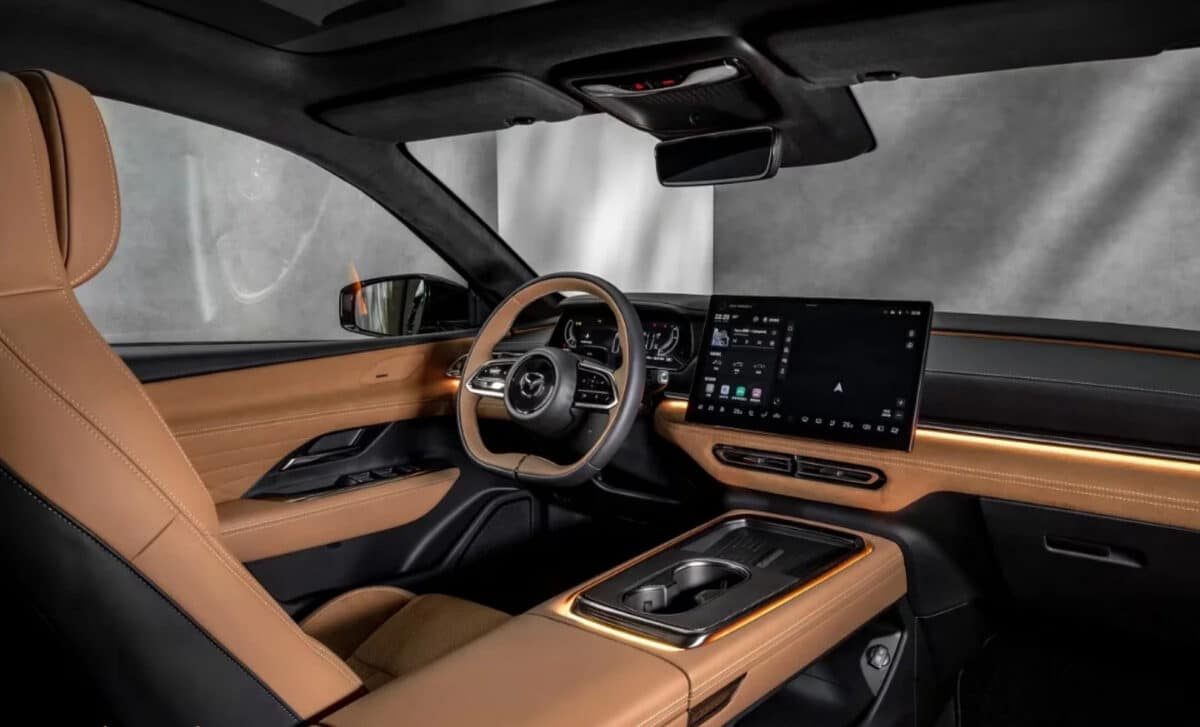
Leveraging Partnerships and Infrastructure for Market Confidence
Mazda’s decision to build the 6e in China was strategic. By partnering with Changan, one of China’s top-selling manufacturers, it avoided the cost and time of developing a proprietary EV platform. This approach gave Mazda faster access to a competitive electric drivetrain and allowed the company to concentrate on tuning and branding.
Mazda’s leadership in Australia described the 6e launch as a “watershed moment,” reflecting a turning point in the company’s electrification path. The car is priced aggressively — under $55,000 AUD — putting it in direct contention with legacy EV players.
Where Mazda retains a key advantage is post-sale infrastructure. The automaker is retraining its dealer network to support EV servicing and charging, providing reassurance to first-time EV buyers who may hesitate with brands that lack established service footprints.
Efficiency results varied during testing. Real-world range fluctuations from 267 miles down to 180 miles depending on driving conditions. Charging speeds were equally inconsistent, with one test session adding 60 kWh in 41 minutes and another hitting 141 kW during a shorter charge.
Even with these limitations, the 6e is seen as a legitimate improvement over Mazda’s prior EV effort. The model doesn’t chase cutting-edge tech or extreme performance. Instead, it delivers a competent, handsome, and generally enjoyable experience — an EV that feels, for the first time, like it belongs in Mazda’s catalog.

